News
TESS’s first gravitational wave source
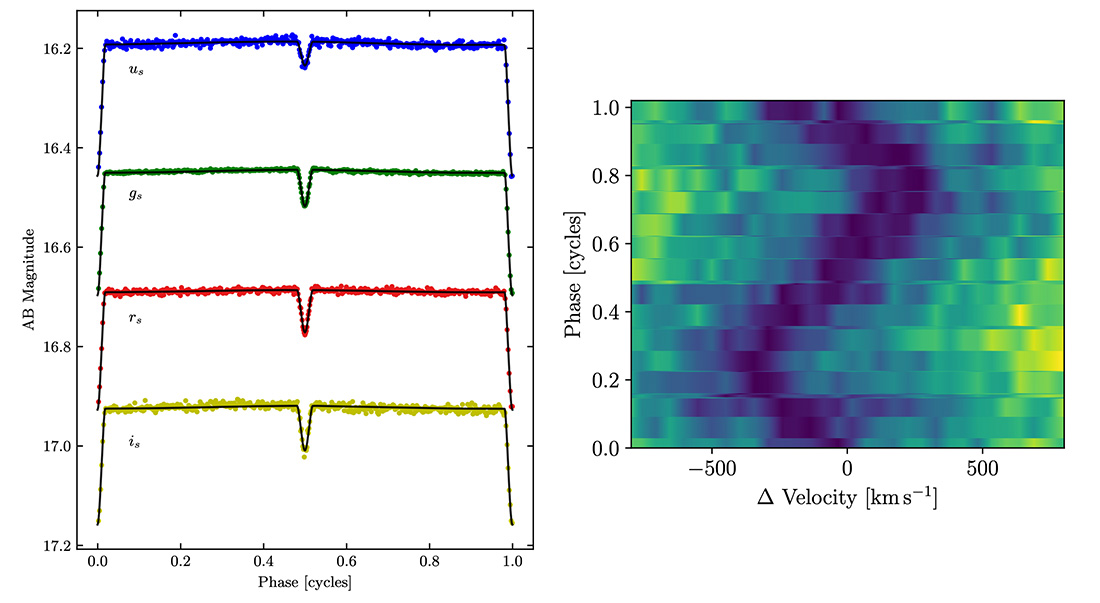
In August 2023, a manuscript led by James Munday from the University of Warwick and including members of the BUWD group (Munday, Tremblay, Hermes, et al. 2023) announced the discovery of an eclipsing, 47.19-min double-white-dwarf binary first identified by NASA's Transiting Exoplanet Survey Satellite. The pair of stars are massive enough (0.40 and 0.28 solar masses) and close enough (separated by roughly the distance from the Earth to the Moon) that they are an extremely strong source of gravitational radiation, ripples in the fabric of space. The system is likely the first binary identified by the TESS mission that will in the future have its gravitational wave radiation directly detected by the LISA space mission. The manuscript has been published in the Monthly Notices of the Royal Astronomical Society.
A two-faced white dwarf
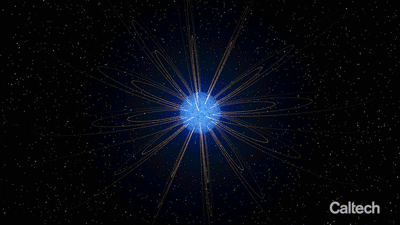
In July 2023, a manuscript led by Ilaria Caiazzo from Caltech and including members of the BUWD group was published in Nature announcing the discovery of an enigmatic new star: a white dwarf that is entirely composed of hydrogen on one side and helium on the other. Every 15 minutes the star rotates once on its axis, showing both its hydrogen and helium faces; we nicknamed the star "Janus" after Roman mythology. We believe the chemical stratification is likely related to a small magnetic field and a very thin layer of hydrogen on the star, but it remains a relatively unsolved problem. The discovery was published in the July 19 2023 issue of Nature and included press coverage from Sky & Telescope, The Guardian, and Space.com.
Emerging magnetism in white dwarfs
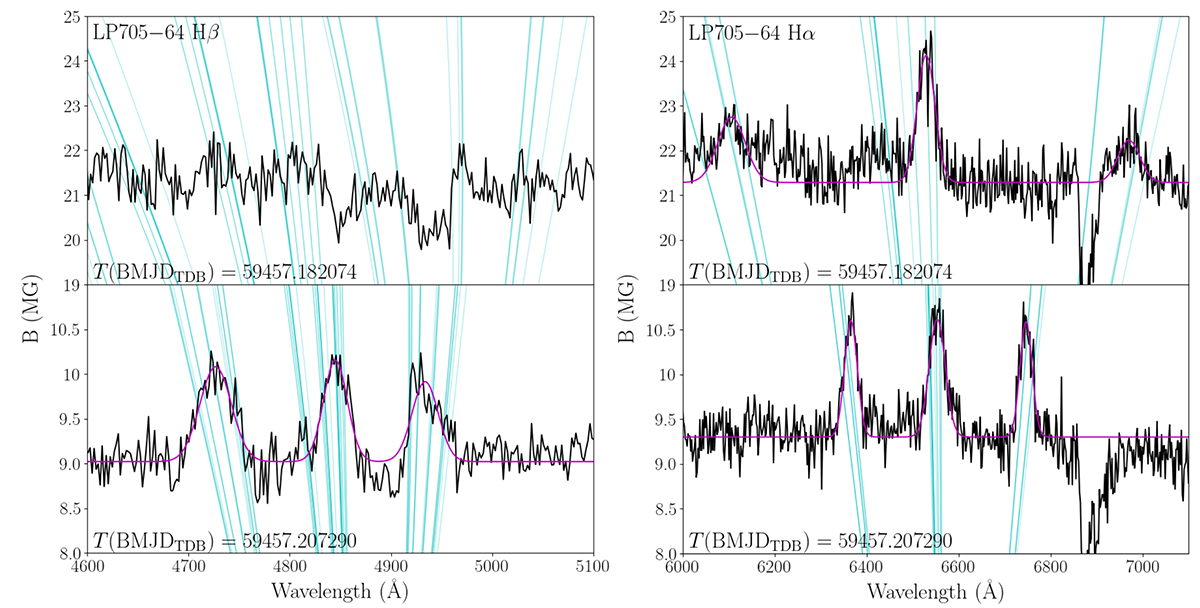
The BUWD group continues observational efforts to understand the emergence of strong magnetic fields in white dwarf stars as they cool down with age. In June 2023, BUWD group members helped in the discovery of two new stars with variable, strongly magnetic Balmer emission lines corresponding to surface magnetic fields more than 5 MG (more 5 million times stronger than in the Sun, see figure above); that work by Reding, Hermes, Clemens et al. 2023 was accepted for publication in a June 2023 issue of the Astrophysical Journal. Group members have also shown that at least some of these white dwarfs with Balmer emission lines do not necessarily have very strong magnetic fields, with some <0.05 MG; that work by Elms et al. is published in the Monthly Notices of the Royal Astronomical Society. Very recently, BUWD group members have helped show that the spot sizes on these magnetic stars cannot be composed of simple single spots; that work by Farihi, Hermes, Littlefair et al. is accepted and published in an October 2023 issue of the Monthly Notices of the Royal Astronomical Society.
A hidden white dwarf found
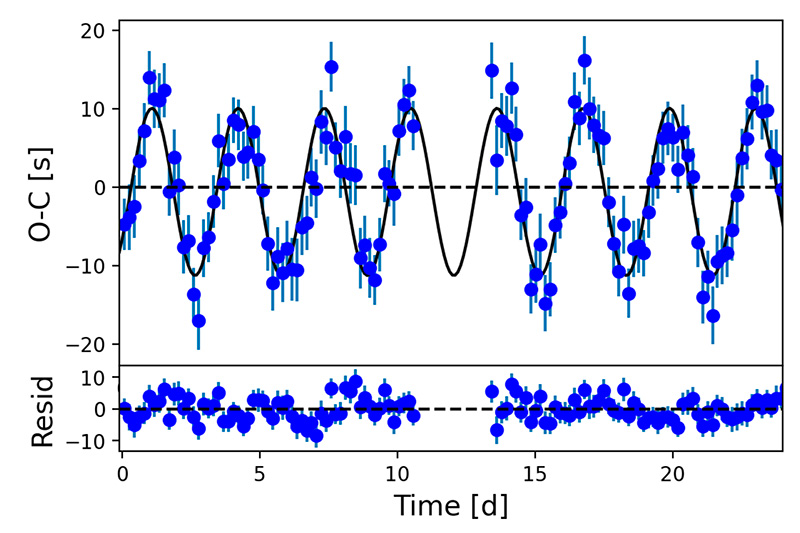
In September 2022, a manuscript led by undergraduate student at High Point University, Bryce Smith, and including members of the BUWD group has been published (Smith, Barlow, Rosenthal, Hermes & Schaffenroth 2022), which announces the discovery of an unseen, cool white dwarf using the stable pulsations of a stripped red giant star. This work implements the same timing method used to find the first exoplanets around a pulsar --- looking for light-travel-time changes in an object with a steady pulsation period. The discovery was confirmed with spectroscopy showing the star really is wobbling from an unseen companion. The pulsation-timing changes were first discovered by a high-school student working with the BUWD group, Ben Rosenthal, who joined us as a RISE intern in July 2021; Ben is now an undergraduate at Yale University. The work has been accepted for publication in the Astrophysical Journal; a short thread on the discovery can be found here.
EuroWD Conference, Aug. 2022

Four members of the BU White Dwarf group traveled to present research results at the 22nd European Workshop on White Dwarfs, this summer held in Tübingen, Germany. The conferences in this series are typically biannual and feature more than 150 international researchers focused on the endpoints of stars, planets, and binary systems.
Empirically testing WD ages
In June 2022, a manuscript led by BUWD graduate student Tyler Heintz (Heintz, Hermes, El-Badry, et al. 2022) was accepted for publication that empirically tested the reliability of white dwarf stars as age indicators. This extensive work was funded by the NSF and used more than 1250 widely separated (>100 au) pairs of white dwarfs to quantify how accurate their ages are. On the whole, white dwarf ages agree to at least 25% using only existing survey data, but we can do better! We also found that roughly 21-36% of the wide WD+WD binaries had a more massive white dwarf that was hotter than the less massive white dwarf -- so up to 1/3 of WD+WD may have arisen from merged triples! The work has been accepted for publication in the Astrophysical Journal; a short thread on the discovery can be found here.
Planetary bodies observed for first time in habitable zone of dead star
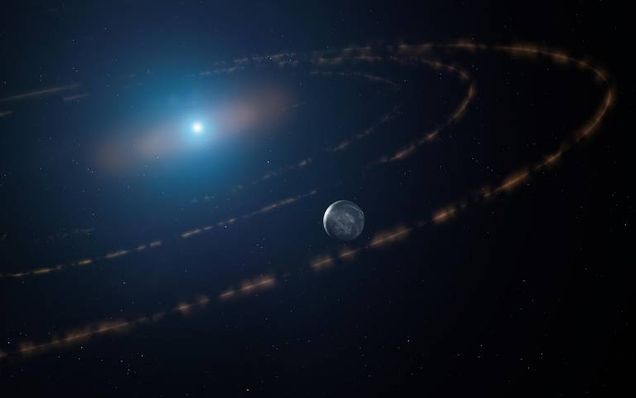
In February 2022, a manuscript led by Jay Farihi from University College London and including members of the BUWD group (Farihi, Hermes, Marsh, et al. 2022) announced the discovery of a remarkable white dwarf that hosts the first planetary debris found in the habitable zone of a retired solar system. The white dwarf, WD1054-226, started out its life like the Sun, but has since evolved through its giant phase and is now a retired white dwarf star. The debris orbits the white dwarf every 25 hours, and features persistent structures in the transit light curve that are most simply explained by a more massive unseen object, in the same way that structures in the rings of Saturn are caused by orbital resonances with moons and moonlets. The discovery was covered by BBC News, NewScientist, Newsweek, Space.com, and IFLScience. A nice thread on Twitter by Corey S. Powell summarizes some of the most interesting figures from the manuscript, published in MNRAS.
TESS finds 74 bright pulsating white dwarfs
In January 2022, a manuscript led by Alejandra Romero from the Universidade Federal do Rio Grande do Sul in Brazil (Romero, Kepler, Hermes et al. 2022) announced the outcome of a large search for bright new pulsating white dwarfs: in the first three years of the TESS mission we have discovered 74 new pulsating hydrogen-atmosphere (ZZ Ceti) white dwarfs. The work involved many members of the BUWD group, as well as observations collected from both the 1.8m Perkins Telescope Observatory as well as the 4.3m Lowell Discovery Telescope, and was coordinated through Working Group 8 of the TESS Asteroseismic Consortium. These bright objects will be studied for the remainder of the TESS mission so that more information can be ascertained from their interiors through asteroseismology. The manuscript announcing these objects by Romero, Kepler, Hermes et al. 2022 has been accepted for publication in the Monthly Notices of the Royal Astronomical Society.
Preempting an ‘oops’ with JWST
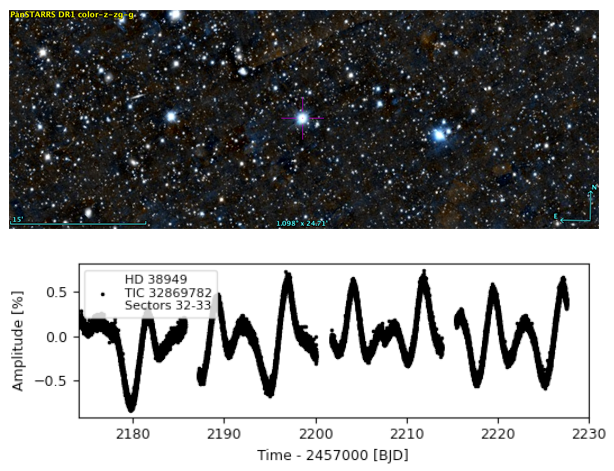
In January 2022, Deputy Project Scientist for JWST Susan Mullally and members of the BUWD group (Mullally, Sloan, Hermes, et al. 2022) announced the first results of a project to monitor nearly all possible spectrophotometric standards that are planned to calibrate the high-precision observations undertaken by the recently launched 6.5-meter James Webb Space Telescope. Using another NASA mission, TESS, we found that most planned standards are suitable for calibrations. However, we also discovered four that are intrinsically quite variable, including one especially poor standard that the JWST team has now thrown out (see image above). The work by Mullally, Sloan, Hermes et al. 2022 has been accepted for publication in the Astrophysical Journal; a short thread on the discovery can be found here.
TESS watches a low-mass white dwarf pulsate
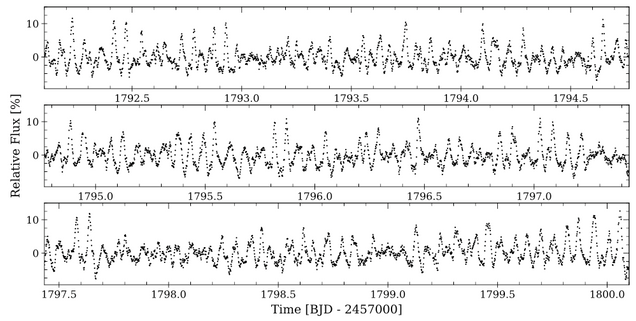
In October 2021, former BUWD group member Isaac Lopez led a global collaboration (Lopez, Hermes, Calcaferro et al. 2021) announcing the discovery, characterization with TESS, and asteroseismic modeling of the pulsations in the first extremely low-mass white dwarf observed from space: GD 278. Using a method to select variable white dwarfs from Gaia pioneered by our group, we first saw pulsations from McDonald Observatory in August 2019. We quickly secured TESS data (see above), producing some of the best data on a pulsating white dwarf ever collected. We matched the observed oscillation periods to theoretical models with multiple stellar evolution codes. This is now the lowest-mass white dwarf with a measured rotation rate. The work by Lopez, Hermes, Calcaferro et al. 2021 was accepted for publication and will appear soon in the Astrophysical Journal; a thread can be found here on Twitter: https://twitter.com/jotajotahermes/status/1446514046027640839?s=20.